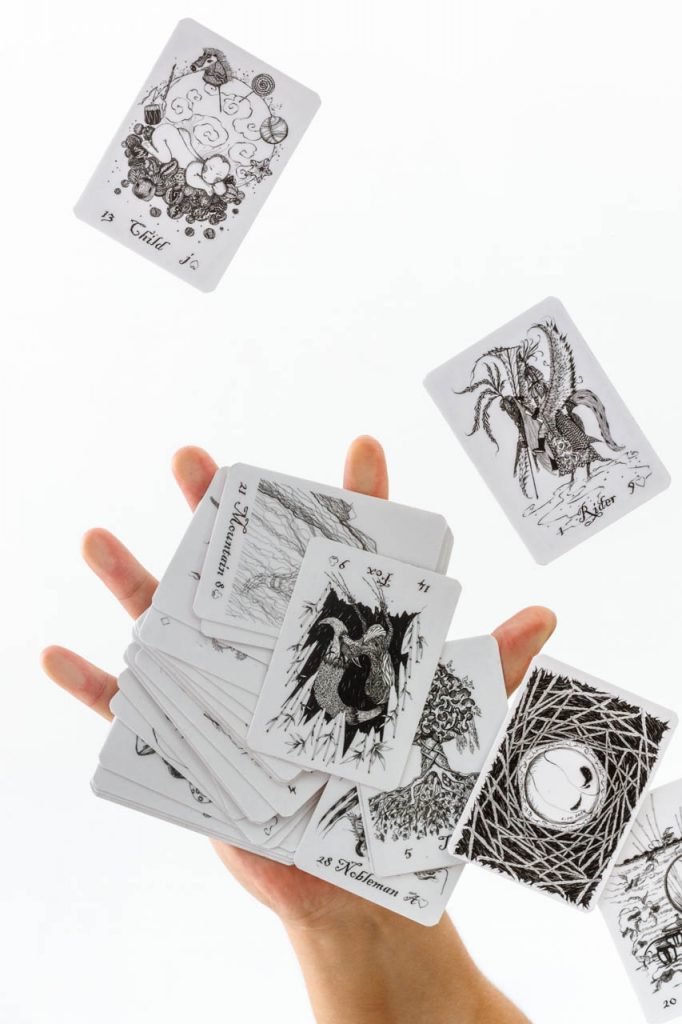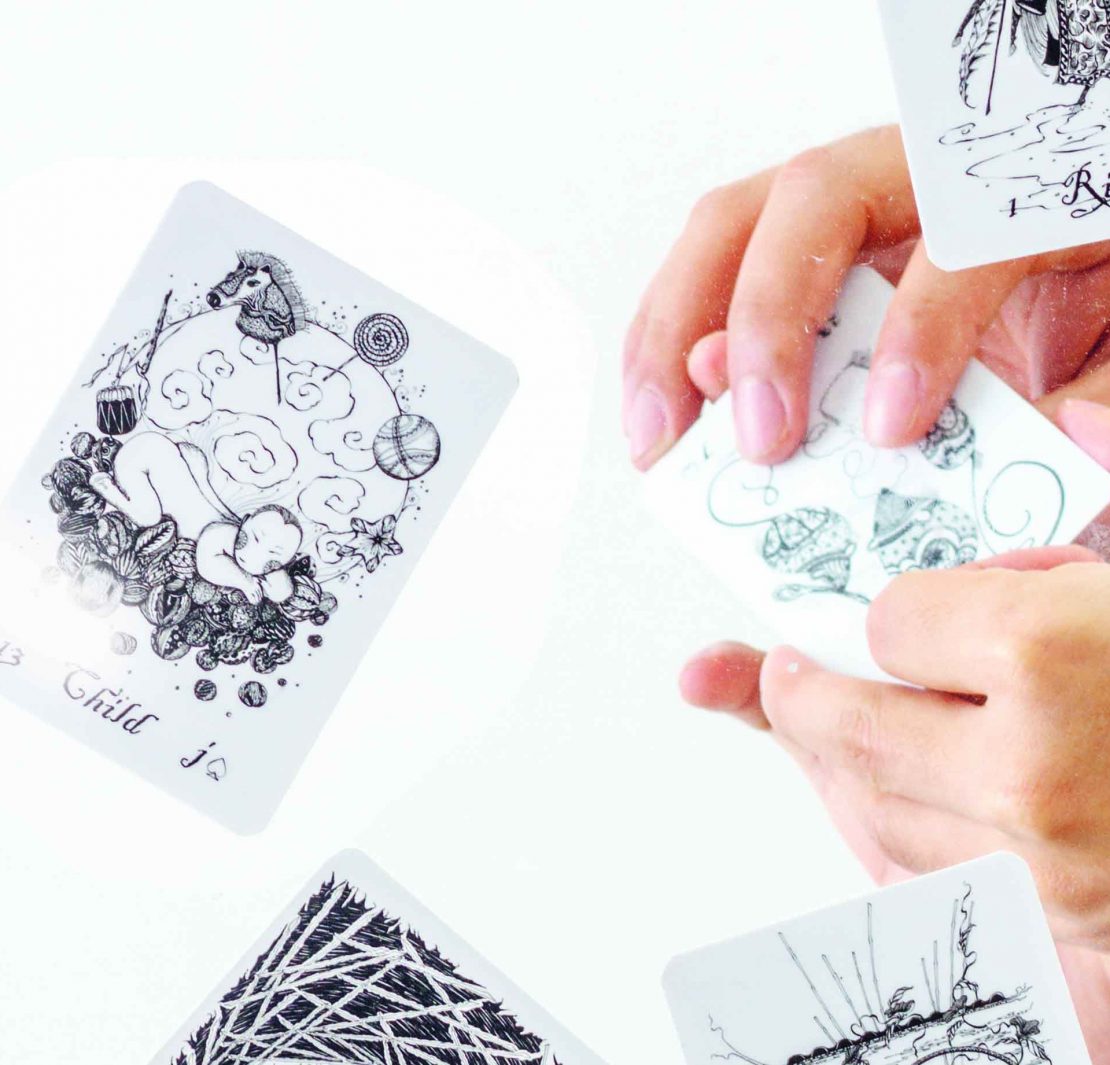Madame Marie Anne Lenormand is one of the most celebrated fortunetellers in history. She foresaw the death of Marie Antoinette by guillotine four years before it happened, and 10 years before Napoleon Bonaparte became the French Emperor, she had predicted his coronation. But one thing she couldn’t foretell was her own death. According to anecdotes, she had believed she’d live for over 100 years, but instead died at 71. Despite the rather large miscalculation, centuries after her death, Lenormand’s legacy lives on through a 36- card deck named after her.
After taking a short course on Jungian archetypal studies, intuitive and artist Oliver Roxas created his own Lenormand oracle deck. Though the deck has European roots, Roxas injected Chinese philosophy and ideals to it. “I found many connections and similarities between traditional European meanings and Chinese meanings. These are evidence of [Carl Jung’s theory of] collective unconscious,” he explains.

Each card from Roxas’ Lenormand deck still abides by traditional meanings, but he also added new interpretations that are based on his meditations. The meanings also change when you place a card in conjunction with another one.
There is something ominous about tarot and oracle cards. These occult objects are often seen as indicators of misfortune, as premonitions. To some extent, there is fear when one consults these objects, and it springs from the desire to know the uncertainty of the future—a usurpation of time’s natural flow. But more than a tool of prediction, oracle cards intend to unravel meanings about the self. “Sometimes, the cards do not give answers,” Roxas suggests. “It is helpful to read the cards with a sense of non-expectation, to trust the cards and your intuition.”
This story originally appeared in Northern Living, Oct. 2017.
Read more:
Have leather dress shoes custom-made in Marikina
A budgetarian’s guide to ArteFino
If pet couture existed it would look like this
Writer: OLIVER EMOCLING
PHOTOGRAPHY PATRICK SEGOVIA




